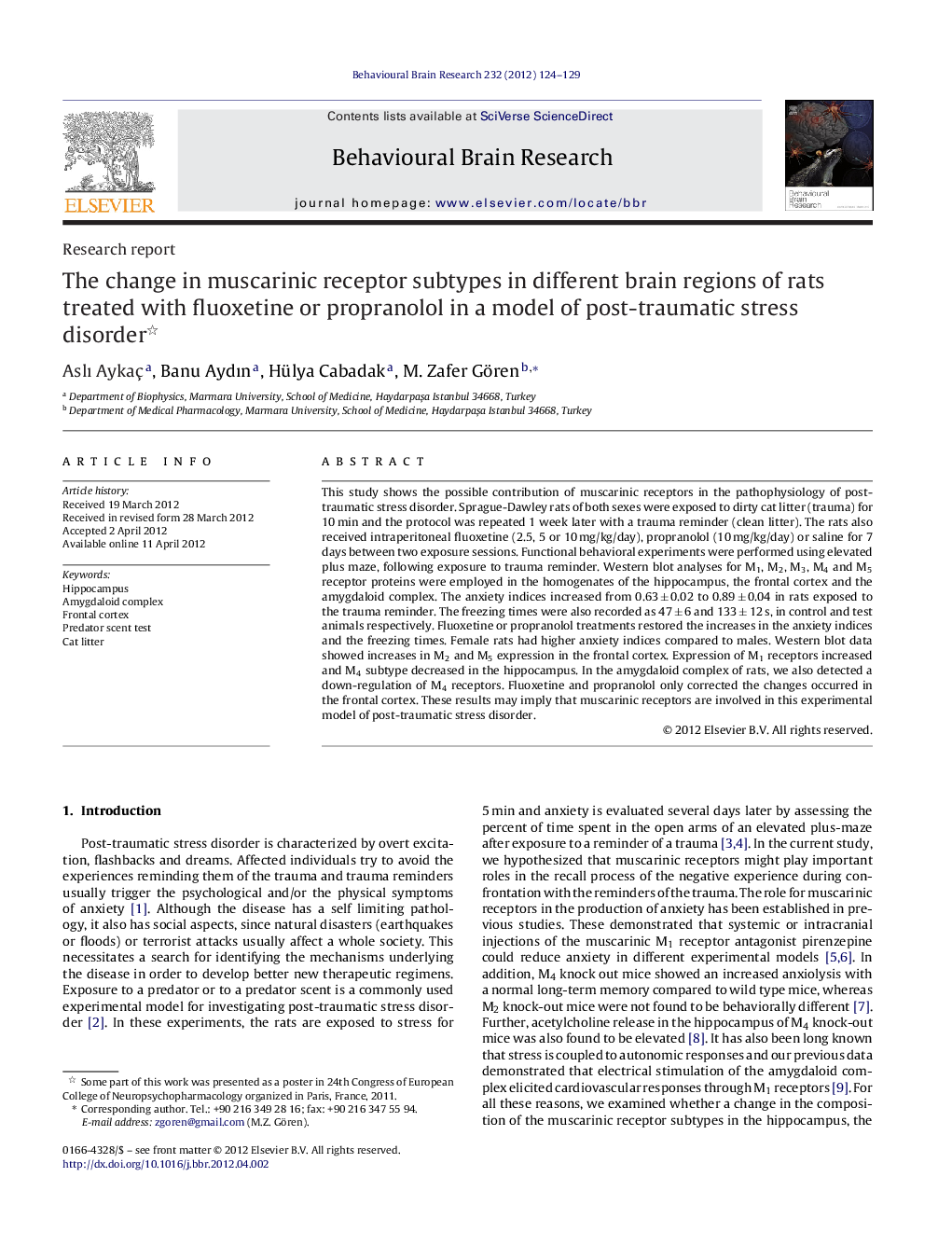| Article ID | Journal | Published Year | Pages | File Type |
|---|---|---|---|---|
| 4313104 | Behavioural Brain Research | 2012 | 6 Pages |
This study shows the possible contribution of muscarinic receptors in the pathophysiology of post-traumatic stress disorder. Sprague-Dawley rats of both sexes were exposed to dirty cat litter (trauma) for 10 min and the protocol was repeated 1 week later with a trauma reminder (clean litter). The rats also received intraperitoneal fluoxetine (2.5, 5 or 10 mg/kg/day), propranolol (10 mg/kg/day) or saline for 7 days between two exposure sessions. Functional behavioral experiments were performed using elevated plus maze, following exposure to trauma reminder. Western blot analyses for M1, M2, M3, M4 and M5 receptor proteins were employed in the homogenates of the hippocampus, the frontal cortex and the amygdaloid complex. The anxiety indices increased from 0.63 ± 0.02 to 0.89 ± 0.04 in rats exposed to the trauma reminder. The freezing times were also recorded as 47 ± 6 and 133 ± 12 s, in control and test animals respectively. Fluoxetine or propranolol treatments restored the increases in the anxiety indices and the freezing times. Female rats had higher anxiety indices compared to males. Western blot data showed increases in M2 and M5 expression in the frontal cortex. Expression of M1 receptors increased and M4 subtype decreased in the hippocampus. In the amygdaloid complex of rats, we also detected a down-regulation of M4 receptors. Fluoxetine and propranolol only corrected the changes occurred in the frontal cortex. These results may imply that muscarinic receptors are involved in this experimental model of post-traumatic stress disorder.
► Dirty cat litter may serve as a trauma and clean litter may be a trauma reminder for rats. ► In this model, we observed significant increases in the anxiety indices and freezing times in rats subjected to stress. ► Up- and down-regulation of different muscarinic receptor subtypes were detected in 3 different brain regions. ► Fluoxetine or propranolol treatments restored the behavioral changes but they only corrected the changes occurred in the frontal cortex.
